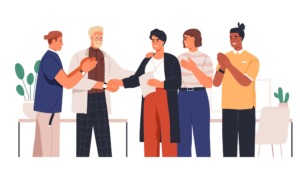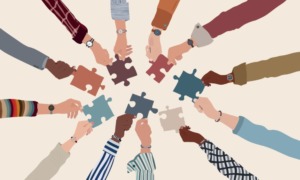Imparting life skills is a primary goal of youth programs around the world. So why do we know so little about what works? And why does the discipline of teaching it remain so fuzzy?
Employers say they want to see life skills in their job applicants. Numerous fancy commission reports name life skills as something essential to be imparted by our schools, training programs, community-based organizations and other institutions as we look to the future.
That’s why life-skills training has become a big business, with companies selling training curricula to youth agencies. Testing services sell life skills assessment inventories. Consultants specialize in assisting life skills programs. Many people have found a way to profit from life-skills programming.
But the life skills field faces many challenges as it evolves. First, “life skills” is an elastic term, with different perceptions of meanings among youth program managers. There are no common guidelines or standards with respect to defining, teaching and using life skills to improve programs. Nevertheless, enhancing these skills is among the most ubiquitous of youth program missions.
Take, for example, the Make a Connection network of youth programs, which operates in 20 countries, is sponsored by Nokia and is managed by the International Youth Foundation.
The network lists the following life skills as a primary, but not exclusive, focus of its member programs: communication, conflict resolution, contribution, cooperation, creative thinking, critical thinking, decision-making, empathy, managing emotions, respect, responsibility and self-confidence.
In other cases, programs do not have a specific list to follow, but believe they are addressing life skills as a secondary means for reaching tangible healthy outcomes, such as jobs or college. Examples include programs that focus on substance abuse, foster care and pregnancy prevention. All are in the life skills business, but seek other outcomes related to their “problem areas.”
Then there’s the problem of research. Before rolling your eyes, let’s just say that measuring the impact of life-skills teaching presents a huge array of challenges, such as needing to use complex surveys to get at the nuanced competencies, and relying on self-reports of behavioral change.
To address some of these challenges, the Center for Youth and Communities here at Brandeis University was hired by Nokia and the International Youth Foundation to help Make a Connection sites measure life skills. Our database included 3,500 youth in 13 countries. We culled the literature and developed new surveys for the projects to use on a pilot basis. The Non-Governmental Organizations (NGOs) that ran the projects administered the surveys after the Brandeis Center and IYF trained their staffs, while our center also analyzed the resulting information.
The project was presented as a pilot aimed at helping the programs with logic modeling, outcome determination and measurement, and using the information for program improvement.
The participating programs now look at their life-skills outcomes with more discipline and clarity. They have begun new conversations with donors and supporters based on analyses that show improvements. The data confirmed for most that they were achieving some life-skills outcomes.
On the other hand, not every life skill shifted for the better, and not every program enjoyed improvements. By one of our measurement methods, programs serving more advantaged or skilled youth tended to show no significant gains in life skills. Conversely, programs serving more disadvantaged youth showed more positive life-skills changes.
That’s expected, because vulnerable youth have the most room to grow from youth development efforts. Note, too, that programs of short duration and low intensity appeared to do less well in improving life skills than did programs that last longer and provide more intensity of contacts.
The field needs more studies of this kind. Despite the central role that life skills play in so many youth programs worldwide, we suffer from a knowledge gap about the efficacy of what we do.
“Measuring Outcomes in Programs Designed to Help Young People Acquire Life Skills – Executive Summary” is available at http://iyfnet.org/document.cfm/6/420.































